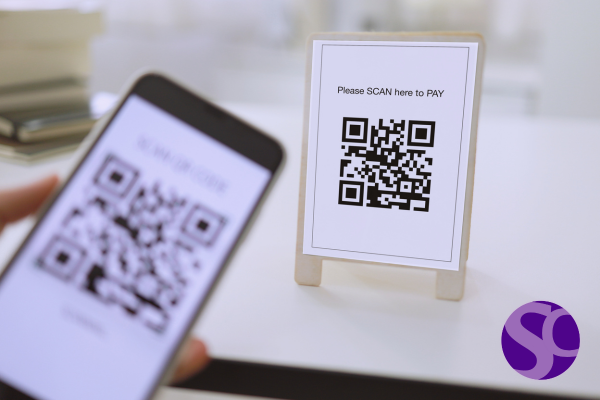Hackers manipulate QR codes to lead unsuspecting users to malicious websites, steal sensitive data, or trick them into downloading harmful software.
Here’s how they typically operate:
Fake QR Code Stickers
Hackers place fraudulent QR code stickers over legitimate ones in public places. Scanning the fake code redirects users to phishing websites that steal personal information or financial details.
Embedded Malware Links
A QR code may link to a file or website that installs malware on your device, granting hackers access to your personal data.
Payment Scams
Scammers replace QR codes used for legitimate transactions (e.g., at parking meters or donation boxes) with their own. Scanning these codes sends payments directly to the scammer’s account.
Signs of a QR Code Scam
To avoid falling for a QR code scam, watch out for these red flags:
- Poor Placement: QR codes that appear hastily added, like stickers over existing ones, may be suspicious.
- Unfamiliar Websites: If the URL after scanning looks strange, avoid clicking.
- Pressure to Act Quickly: Scammers often create urgency to push you into acting without thinking.
- Unsecured Links: Always check for “https://” in the URL before entering sensitive information.
How to Stay Safe When Using QR Codes
Protect yourself from QR code scams by following these safety tips:
Inspect the QR Code’s Placement
Check for signs of tampering, like stickers or labels over original QR codes.
Preview URLs Before Clicking
Many smartphones allow you to preview the URL before opening it. Avoid any links that seem unfamiliar or untrustworthy.
Use Trusted QR Code Scanners
Apps like Google Lens or your phone’s built-in scanner often have safety features that flag suspicious links.
Avoid Scanning Random QR Codes
Refrain from scanning QR codes from unknown sources, especially in public spaces or unsolicited emails.
Monitor Financial Transactions
Regularly check your bank statements for unauthorized transactions if you’ve scanned a QR code for payment.
What to Do If You’re a Victim of a QR Code Scam
If you suspect you’ve fallen victim to a QR code scam:
Stop Interacting Immediately
Close the website and avoid entering any personal information.
Run a Security Scan
Use trusted antivirus software to scan your device for malware.
Change Passwords
If you entered login credentials, change your passwords immediately and enable two-factor authentication.
Report the Scam
Notify the company or organization whose QR code was altered and report the incident to authorities or platforms like the FTC.
Monitor for Fraud
Keep an eye on your bank account and credit report for suspicious activity.
Don’t Fall Victim to QR Code Scams: Contact Us Today
QR codes are handy, but the rise of QR code scams is a reminder to stay vigilant. By knowing the warning signs and taking a few precautions, you can enjoy the benefits of QR codes while protecting yourself from potential threats.
Looking for ways to educate your audience on digital safety? Contact us to learn how we can create campaigns that build trust and awareness!


Recent Comments